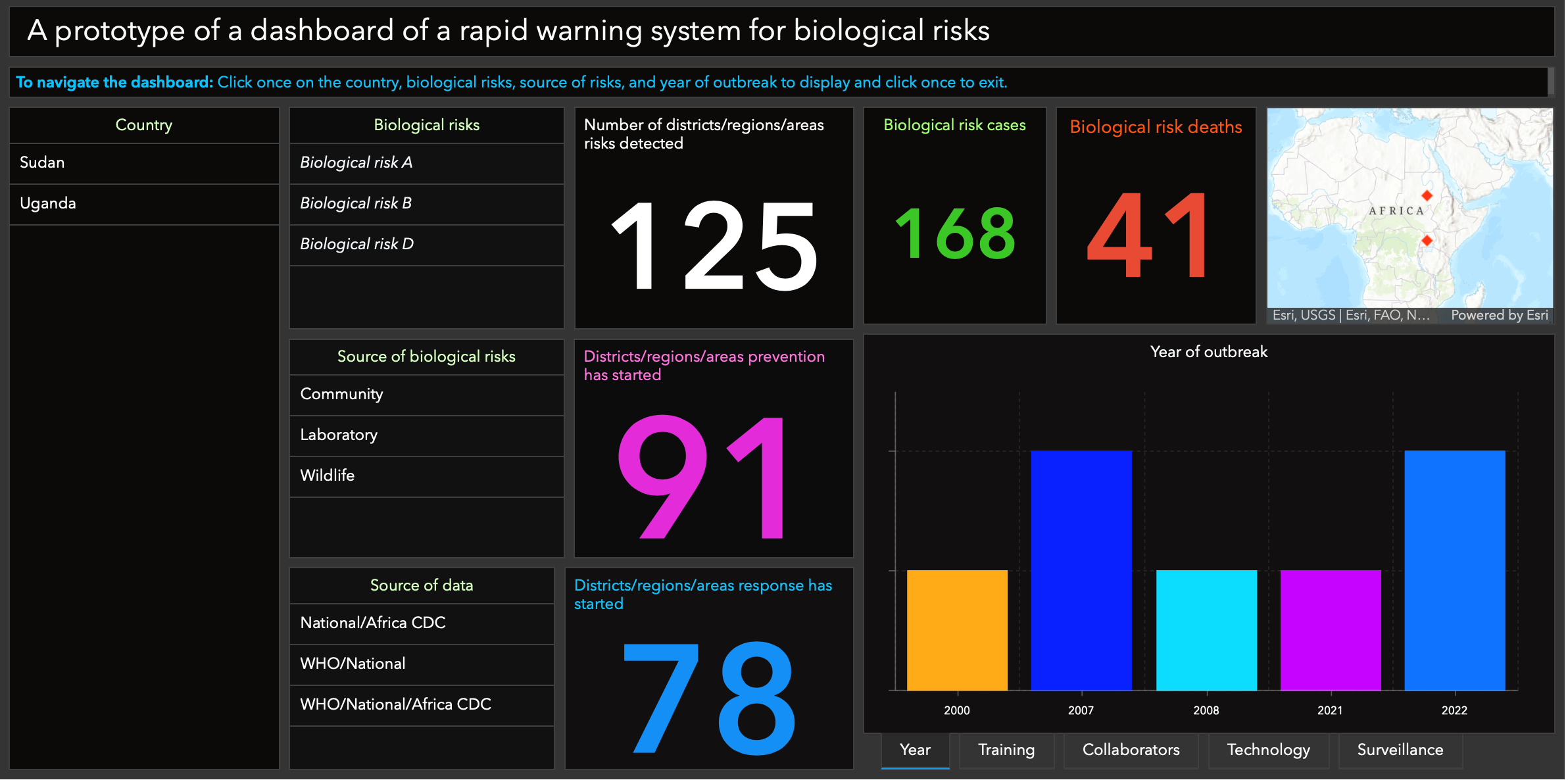Explore the interactive Geographic Information System (GIS) dashboard that illustrates the impact of the Ebola virus across various districts in Uganda between 2000 and 2022. This comprehensive dashboard provides insights into the occurrences of three types of Ebola viruses in Uganda, affecting a total of 14 countries. Navigate the dashboard by visiting the following website: http://206.81.15.188/district.html and follow the provided instructions for a detailed exploration of the data.
1) Ebola outbreak in Uganda from 2000 to 2022
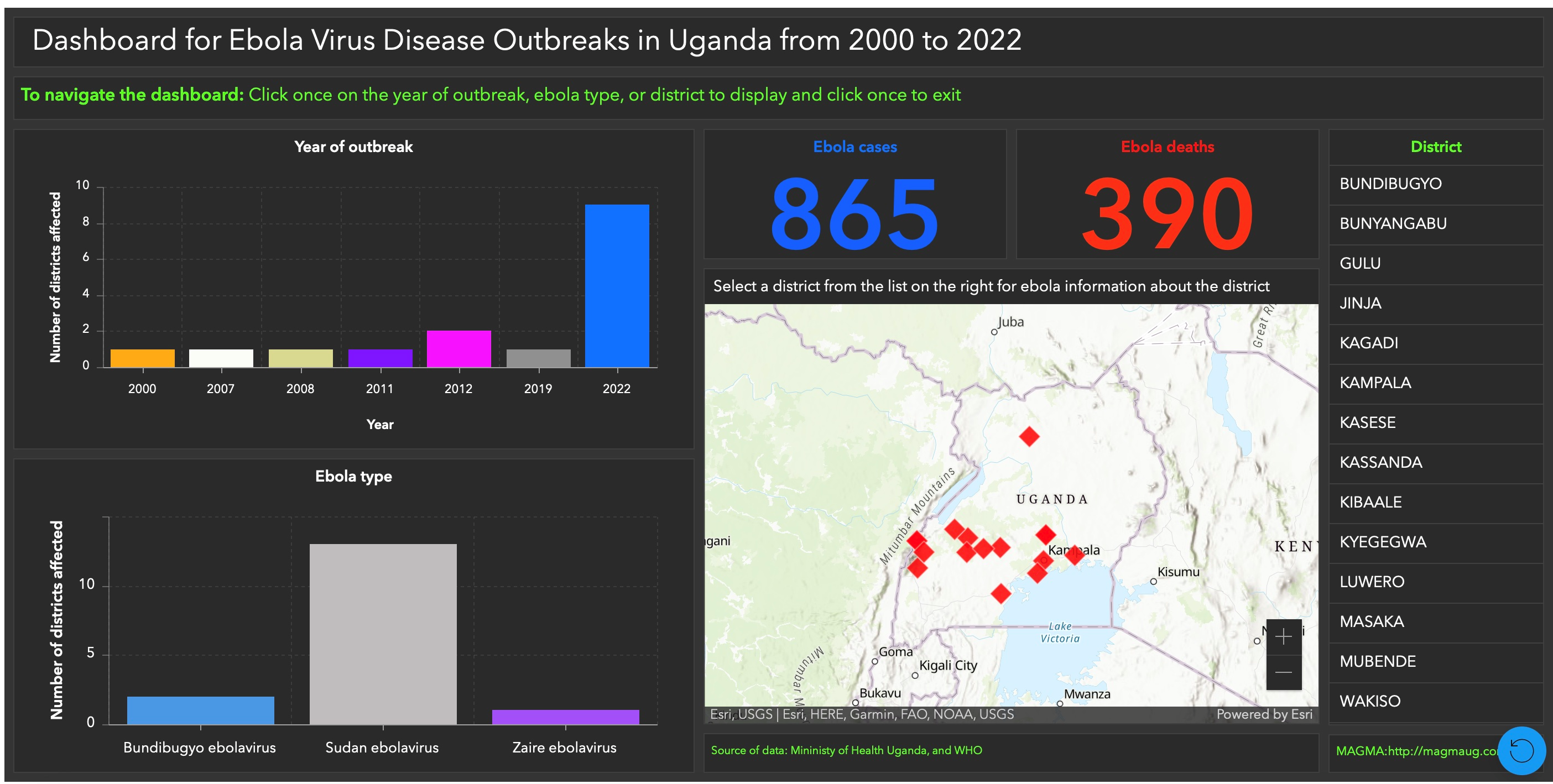
2)Ebola outbreak in Uganda in 2022
Uganda reported an outbreak of Sudan ebolavirus on September 20, 2022, which became the country’s fifth incident of this nature within a decade. The outbreak led to the identification of 164 cases, comprising 142 confirmed cases and 22 probable cases. Among these, 55 confirmed deaths were reported, while 87 individuals successfully recovered from the infection. To facilitate the monitoring of the ebolavirus situation, a comprehensive dashboard was developed by Patira Data Science based on data provided by the World Health Organization and the Ministry of Health, Uganda. For a detailed analysis of the data, please visit the following website: http://206.81.15.188/biological_b.html and follow the instructions provided on the platform.
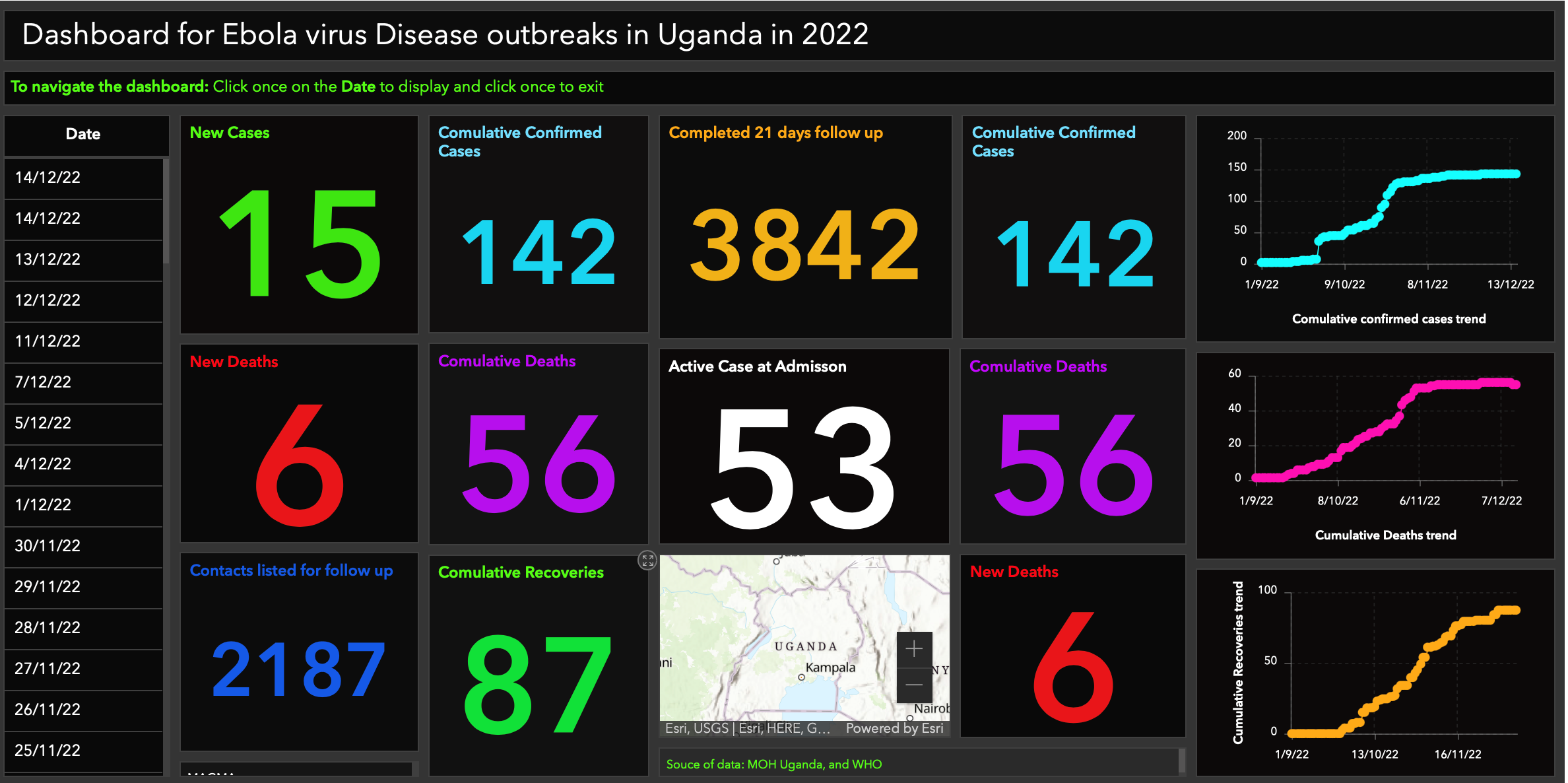
3) Visualization of Pfizer Atlas Antimicrobial Resistant (AMR) data
Antimicrobial resistance (AMR) poses a critical global health threat, necessitating comprehensive and innovative data management and analysis approaches. Building upon our work from the Vivli AMR Surveillance Open Data Re-Use Data Challenge using Pfizer ATLAS Antibiotics dataset. https://amr.vivli.org/data-challenge/finalist-and-award-winning-solutions/). We developed an all-encompassing interactive GIS dashboard that covers all the countries within Pfizer ATLAS Antibiotics dataset. It offers insights on various aspects, including a map, country selection, regional breakdown, number of isolates, number of countries per year, and navigation instructions.
You can access the dashboard through this website: Click Here
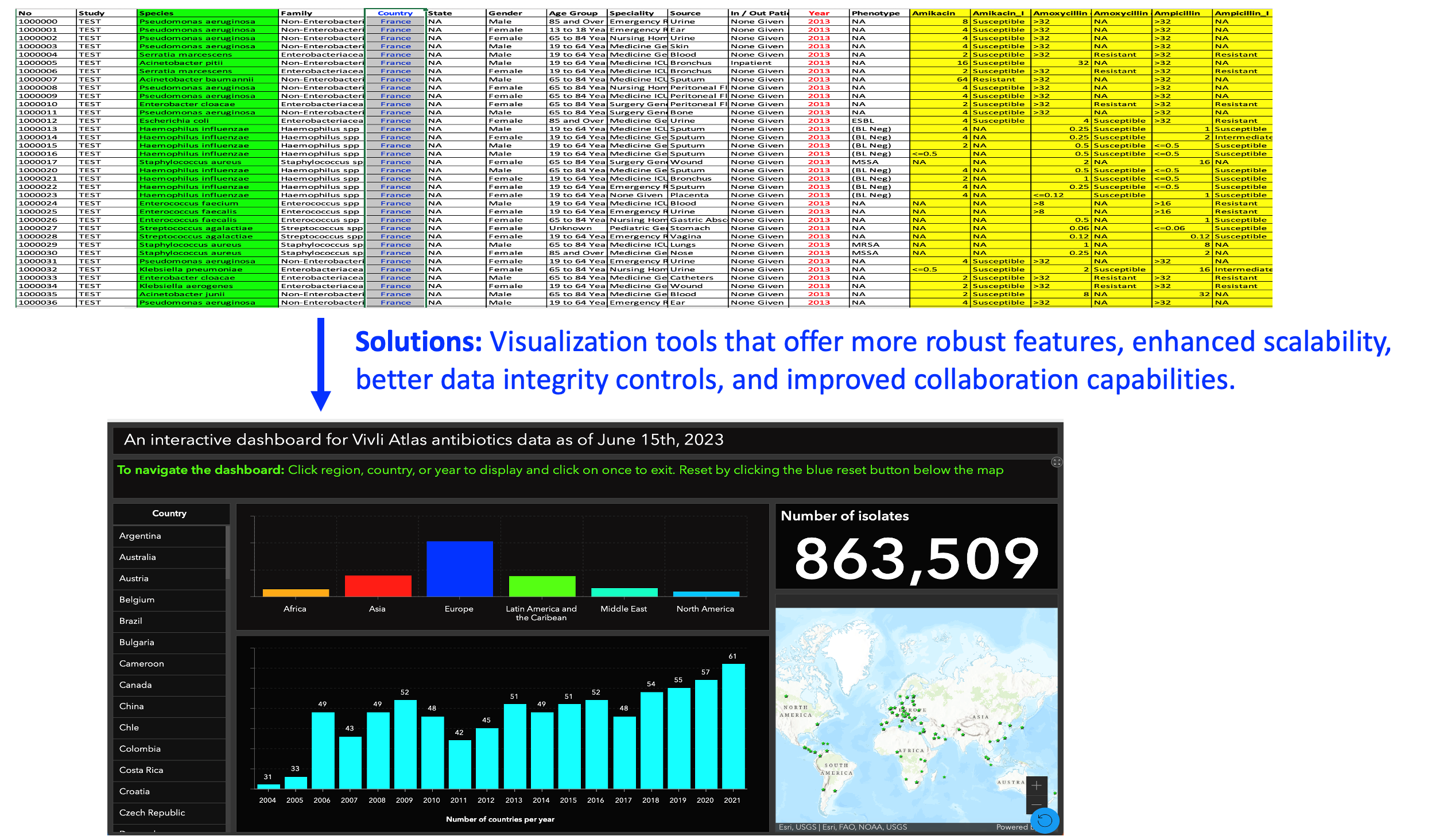
We also developed an interactive GIS dashboard tailored to the Pfizer ATLAS Antibiotics dataset originating from Kenya and Uganda. Feel free to access the dashboard through the provided link.
https://patira.maps.arcgis.com/apps/dashboards/a1324c58e49e4561ac9505936db7743a
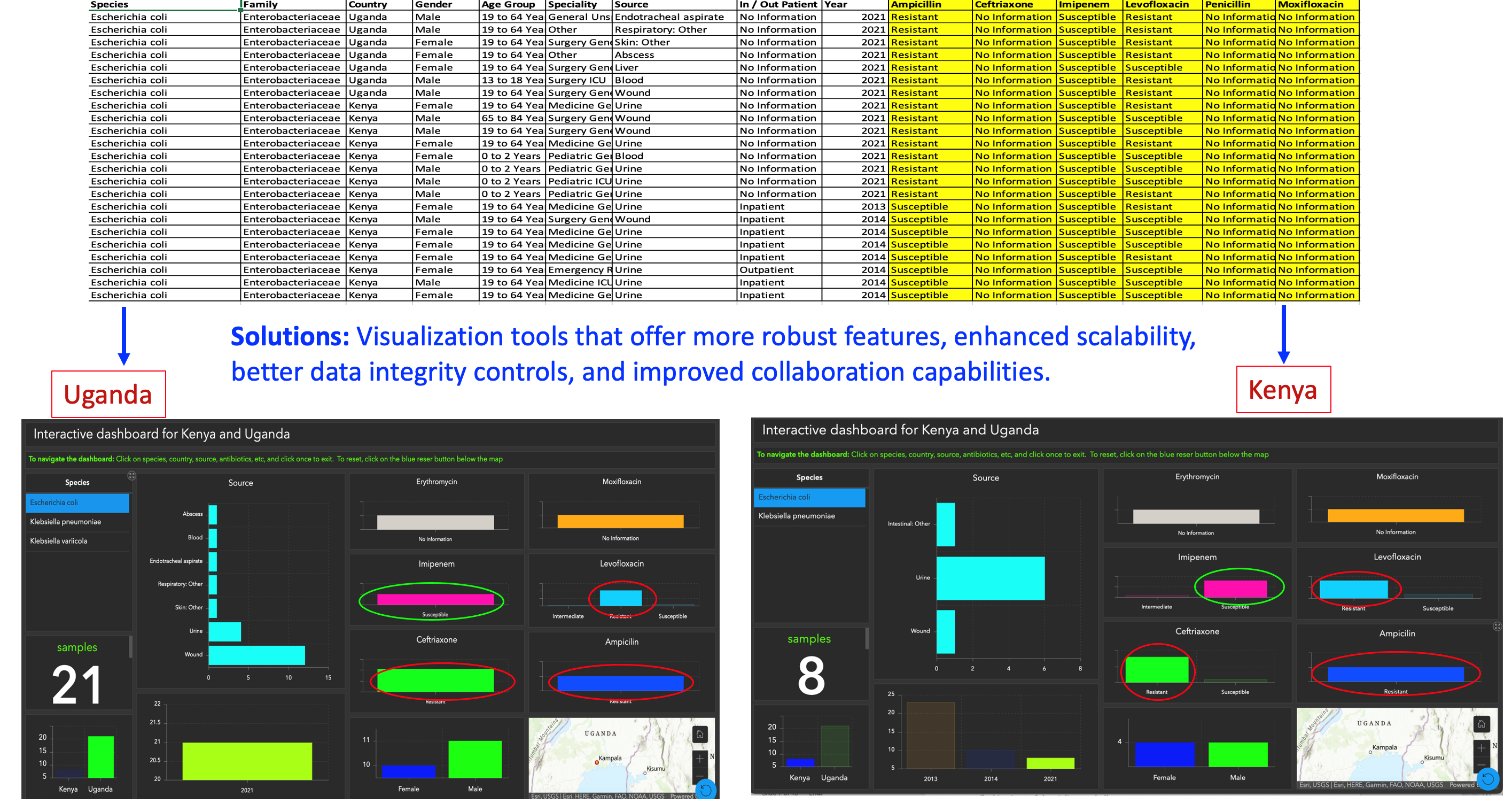
The certificate given for Vivli challenge participant
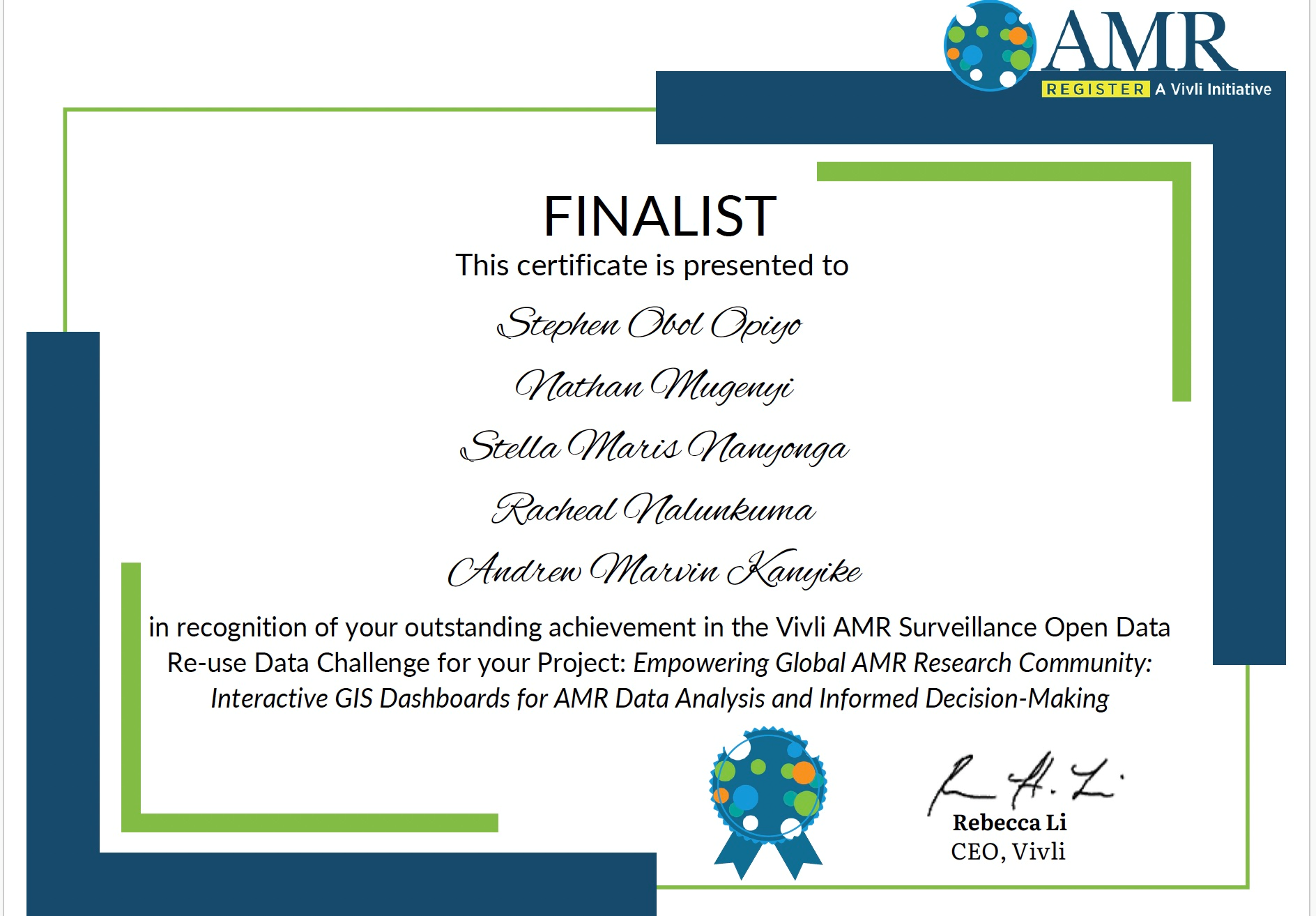
4) Surveillance using Covid-19 and Mask distribution data in Amuru district, Uganda
In the context of combating the ongoing COVID-19 pandemic, the Amuru district in Uganda has implemented a comprehensive surveillance system, leveraging data from Covid-19 cases and the distribution of masks. By integrating these two crucial datasets, local authorities have gained a nuanced understanding of the virus’s spread and the efficacy of preventive measures within the community. This data-driven approach has facilitated targeted interventions, enabling the district to allocate resources efficiently and prioritize high-risk areas for proactive measures such as increased testing, vaccination drives, and targeted mask distribution campaigns. The amalgamation of Covid-19 and mask distribution data has not only enhanced the district’s ability to monitor the pandemic’s trajectory but has also empowered decision-makers to adopt evidence-based strategies, fostering a more effective and responsive public health framework to safeguard the well-being of the community.
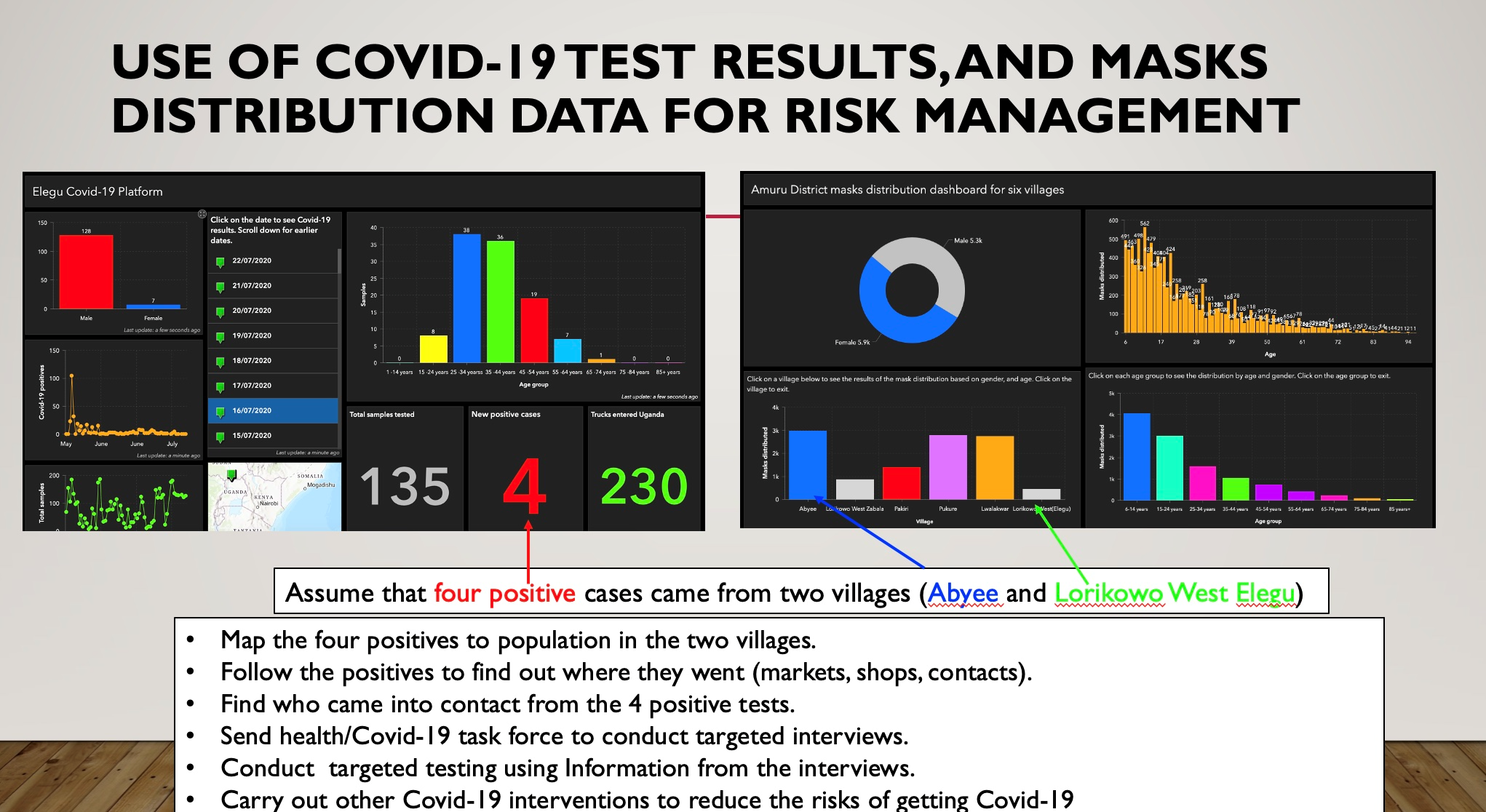
5) A prototype of a rapid warning system for biological risks
Biological risks (emerging infectious diseases, high consequence pathogens of unknown origin, and potentially engineered agents) could lead to Global Catastrophic Biological Risks (GCBRS). African countries’ ability to control biological risks will depend on stronger surveillance and detection capabilities. However, screening tests and diagnoses for biological risks are not readily available in most African countries. Therefore, there is a need for more realistic ways of making decisions regarding how to control biological risks. We are proposing to develop and deploy a Rapid Warning System that will Detect, Prevent, and Respond to potential biological risks using a One-Health approach. Developing a rapid warning system will require reliable source of data, source of biological risks, a network of laboratories platforms, technology, human resource, capacity development, and stakeholders/collaborators, and others as shown below. You can access the prototype using the following link: http://206.81.15.188/biological.html. The dashboard can be navigated through a country, type of biological risks, source of biological risks, and year in which the biological risk was identified in the country. The dashboard displays number of districts/regions/areas that the biological risks has been detected, prevented, or responded to, cases of biological risk, deaths from biological risks, training, collaborators, source of data, surveillance, and the map of the countries.
